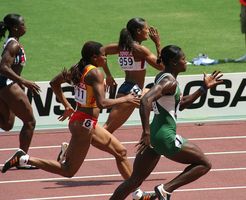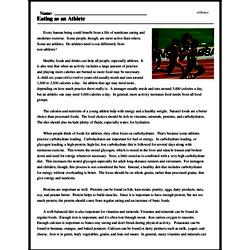Eating as an Athlete
Every human being could benefit from a life of nutritious eating and moderate exercise. Some people, though, are more active than others. Some are athletes. Do athletes need to eat differently from non-athletes?
Healthy foods and drinks can help all people, especially athletes. It is also true that when an activity includes a large amount of practice and playing more calories are burned so more food may be necessary. A child six-years-old to twelve-years-old usually needs and eats around 1,600 to 2,500 calories a day. An athlete that age may need more, depending on how much practice there really is. A teenager usually needs and eats around 3,000 calories a day, but an athletic one may need 5,000 calories a day. In general, more activity increases food needs from all food groups.
The calories and nutrients of a young athlete help with energy and a healthy weight. Natural foods are a better choice than processed foods. The food choices should be rich in vitamins, minerals, proteins, and carbohydrates. The diet should also include plenty of fluids, especially water, for hydration.
When people think of foods for athletes, they often focus on carbohydrates. That's because some athletes practice carbohydrate loading. Carbohydrates are important for fuel or energy. In carbohydrate loading, or glycogen loading, a high-protein, high-fat, low carbohydrate diet is followed for several days along with strenuous exercise. This lowers the stored glycogen, which is stored in the liver and muscle tissues and broken down and used for energy whenever necessary. Next, a little exercise is combined with a very high carbohydrate diet. This increases the stored glycogen especially for adult long-distance runners and swimmers. For teenagers and children, though, this process is not considered the best. Instead, a healthy diet that includes carbohydrates for energy without overloading is better. The focus should be on whole grains, rather than processed grains, that give energy and nutrients.




